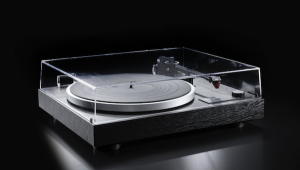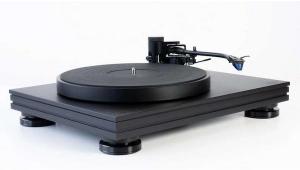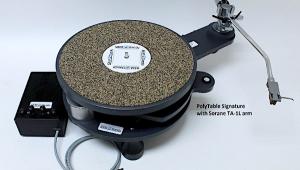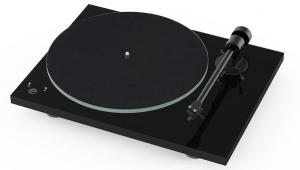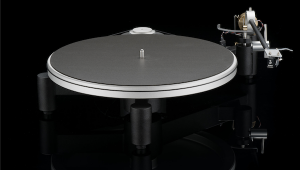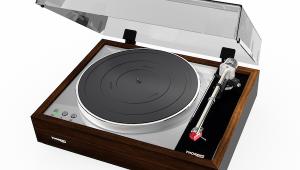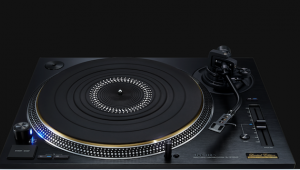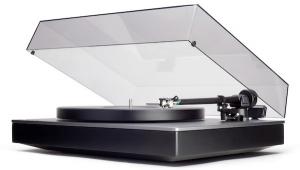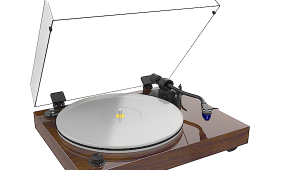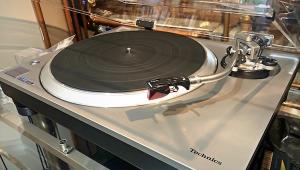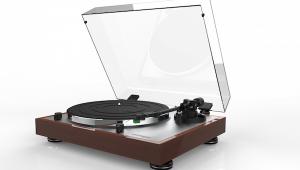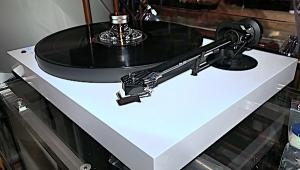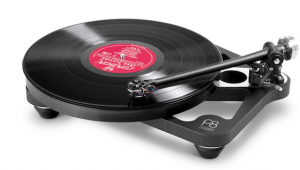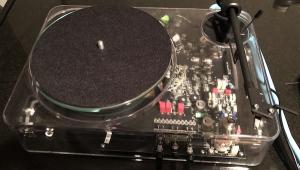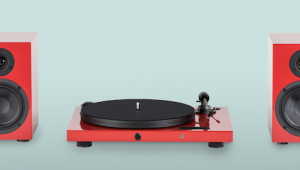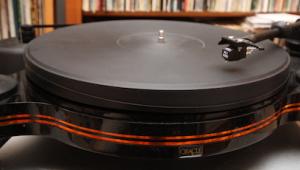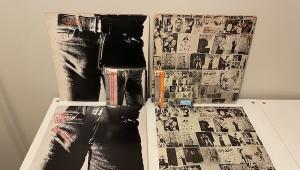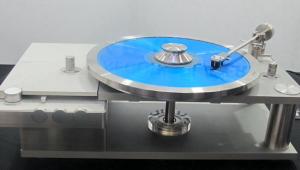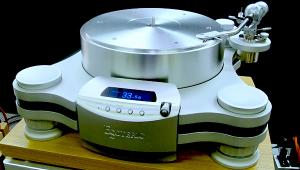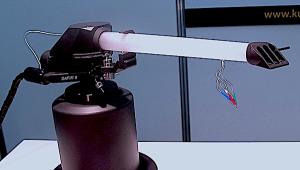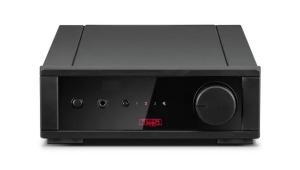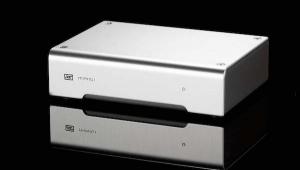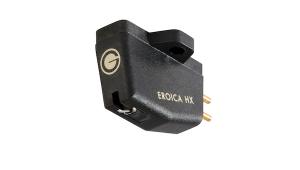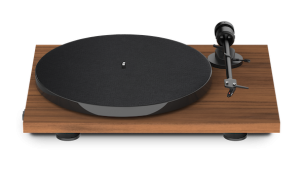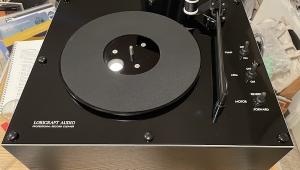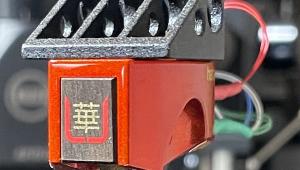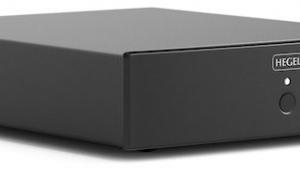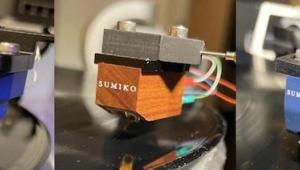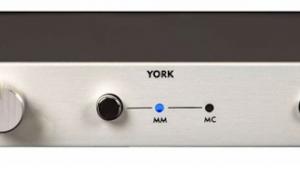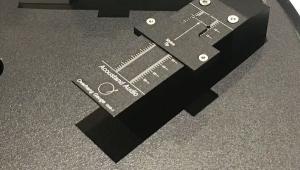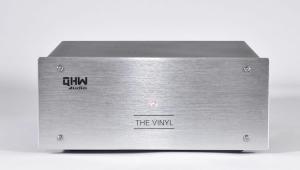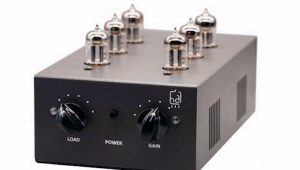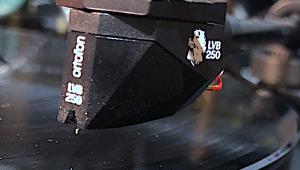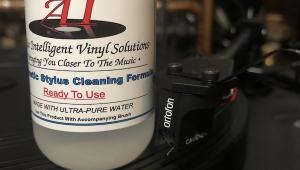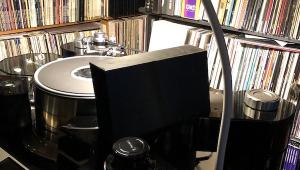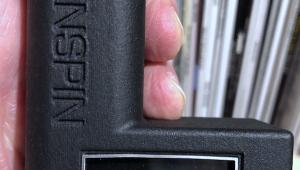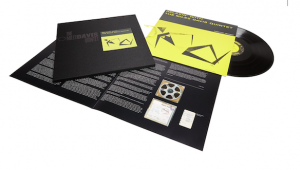Rega Research RP8 Turntable Aims For Mass Extinction
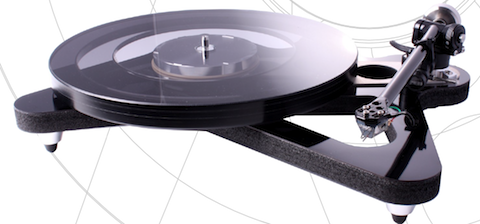
Obviously swimming upstream is both literally and figuratively more difficult than swimming downstream. Turntable manufacturers starting with pricey ‘statement’ designs usually, but not always, have an easier time producing lower priced ‘tables.
In the 1970s Rega Research began building “real world” priced, low mass, unsuspended turntables, sourcing tone arms from Danish and Japanese suppliers. Rega’s early ‘tables sounded fast, pleasingly lean, and rhythmically assured compared to their lumbering brethren.
Rega’s decision in the early 1980s to invest in the expensive tooling required to manufacture a rigid, one-piece cast tone arm as the compact disc’s introduction loomed, produced both immediate and long term sonic and financial benefits: in addition to greatly improving the sonic performance of its own ‘tables with the new RB250 and RB300 tone arms, the company began selling to turntable manufactures around the world OEM versions of the arms.
Throughout the years Rega has remained true to its design philosophy of low mass, high rigidity, unsuspended, motor-onboard construction, sticking with the O-ring driven sub platters and felt mat topped glass platters—all the while incrementally “swimming upstream” with products that outperformed previous efforts.
A few years ago when the original arm casting finally wore out, Rega set about re-designing the arm, this time aided by computer modeling. Though the new and improved edition looks superficially like the one it replaced, significant changes were made to mass distribution that improves both the arm’s dynamic performance and its resonance damping abilities.
Rega’s farthest upstream swim produced the now discontinued $4995 Rega P9, which replaced the ubiquitous single O-ring driven plastic hub with one machined of aluminum driven by dual O-rings, and swapped out the usual glass platter with one of ceramic fabricated from a material similar to what’s used on some guided missile nose cones, along with a host of other upgrades including the RB1000, the finest expression of the basic Rega tone arm. A single tone arm specialist could produce dozens of RB300 arms in the time it took to assembly and tweak a single RB1000.
New RP 8 “Pokes Holes” In Rega’s Design Philosophy
Rega has always been about rigid, low mass plinths and modest mass platters. The company’s latest series of turntables has taken that concept to high tech extremes with sonically outstanding results.
How good does Rega think its new RP8 performs and sounds? The company discontinued the P9 because it claims the RP8 comes oh so close sonically while costing far less. The upcoming P9 replacement, the RP10, will be even better, the company promises.
If you thought Rega ‘tables were low mass before, have a look at the new skeletal RP8. It is the company’s most rigid, lowest mass design yet. The outer frame serves mainly to hold the dust cover and can be left in the shipping box if you don’t feel the need for plastic dust and/or people (or pussycat) protection.
That leaves the asymmetrical skeletal frame, fabricated from a Rega-specified version of Zotek® a new “space age” polyolephin foam that’s both ultra-rigid and ultra-low mass. According to Rega CEO and 30 plus year Rega veteran Phil Freeman, the material begins as a shoebox sized block that’s saturated with nitrogen gas and then “shock vacuumed” in a compression chamber, shrinking it down to a thin, rigid, symmetrical, closed-cell foam.
The foam is machined and sandwiched between two thin layers of a stressed skin structure of phenolic producing a plinth that is seven times lighter than that of the original Rega 3, while of course being far more rigid.
The ‘table incorporates the previously developed “stress beam” assembly linking the tone arm and platter hub. The top layer of magnesium and bottom layer of phenolic produce increased structural rigidity, while its self-damping properties reduce structural resonances and restrict external energy absorption.
The dust cover-holding outer frame is of the same material as the plinth and appears to be the “left over” from cutting out the skeletal plinth. Its three large feet incorporate elastomer bands that self-center the skeletal plinth’s three elastomer tipped feet and are the plinth’s only frame contact points.
Driving the hub via dual O-rings is a high spec 24V twin-phase motor topped by a CNC machined dual-grooved pulley. As in earlier Regas, each motor is individually tuned to its associated power supply’s anti-vibration circuit incorporated within the outboard TT-PSU power supply. Based upon a high stability crystal locked low distortion sine wave generator, the TT-PSU generates a 24V AC balanced signal with less than 0.05% distortion.
The hub of solid aluminum is similar to the one used on the P9. With the launch a few years ago of the RP3, Rega moved for production of its glass platters to a new high-tech, CNC-based manufacturer, ending a thirty-year relationship with the original glass platter maker. This allowed Rega to add to the platter a bonded outer rim first used on the RP6 that produced a beneficial flywheel effect. The RP8’s newly designed platter shifts the mass still further towards the platter’s perimeter, exponentially increasing the flywheel effect. Freeman claims that the RP8’s drive system equals at a substantially lower cost the quality and performance of the mid-nineties P9.
By the way, speaking on the record about Rega’s resurgence (the company doubled the size of the then new factory I visited in 1999), Freeman told me that when the RP1 was designed and brought to market, he envisioned sales of perhaps 500 a month. Actual monthly sales today are about six times that number!
Also new is the RB808 tone arm. It’s hand-built using improved bearings and a tightened spindle-fit tolerance. It incorporates a new low mass, precision-engineered vertical bearing assembly, a new glossy and very attractive powder coat finish and new, flexible, low capacitance Germany-sourced cables terminated with twist-clamp type plugs.
So what you have here is a very highly evolved edition of Rega’s core concept, built using previously unavailable materials and construction techniques that will set you back $2995 or, $3995 if ordered as a package with a factory installed $1795 Apheta MC cartridge— a saving of a hefty $800 on the cartridge.
Set-Up And Use
Factory-fitted with the Apheta cartridge, set-up is simple, though the two-piece plinth is at first a bit awkward to handle and takes some getting used to. After placing the platter on the hub, level the plinth using the three threaded elastomer-tipped feet, put the counterweight onto the stub and with the tracking force spring set to zero, balance the arm, then apply the 1.75 gram VTF.
(Three unknown variables were two too many so after a few day’s listening to the Rega trio, for most of my listening, I used known cartridges into known phono preamps, returning to the Rega trio towards the end of the review period.)
If you don’t look very carefully you won’t see the gram markings on the tracking force adjustment ring. In fact, until Freeman alerted me to them, I thought Rega had done away with tracking force markings on this arm. Set the anti-skating according to the instructions, plug the multi-pin plug into the TT-PSU, the “wal-wart” into the PSU and the phono cables into the MC input of your phono preamp, and once you’ve removed the stylus guard you’re ready for vinyl action!
Remember though, that the three point cartridge mount uses Rega’s unusual alignment geometry that minimizes distortion at the inner groove area while maximizing it elsewhere along the arc the stylus traces. It’s best for classical music only in my opinion.
While this makes for a relatively fast, easy set-up, particularly for novices, veterans wishing to use their cartridge choice will note that as has always been the case with Rega tone arms, there’s no easy way to adjust either VTA/SRA or azimuth.
Using Acoustic Signature’s ingenious shims, it’s possible to raise the back of the arm without first removing it, but if proper 92 degree SRA setting requires lowering the arm, the only solution is to use a thicker mat to raise the platter relative to the arm pivot.
If your cartridge hasn’t been perfectly constructed (too few are) and cantilever perpendicularity to the record surface isn’t the optimum azimuth setting, you are again out of luck. Rega’s position here as it has always been is that structural rigidity trumps all other considerations.
Rega sent along one of its new $1495 Aria MM/MC phono preamplifiers reviewed here) so I began listening to the RP8 with the Apheta cartridge, and Aria phono preamp, but not until I let the platter spin for a few hours to give it some break-in time.
